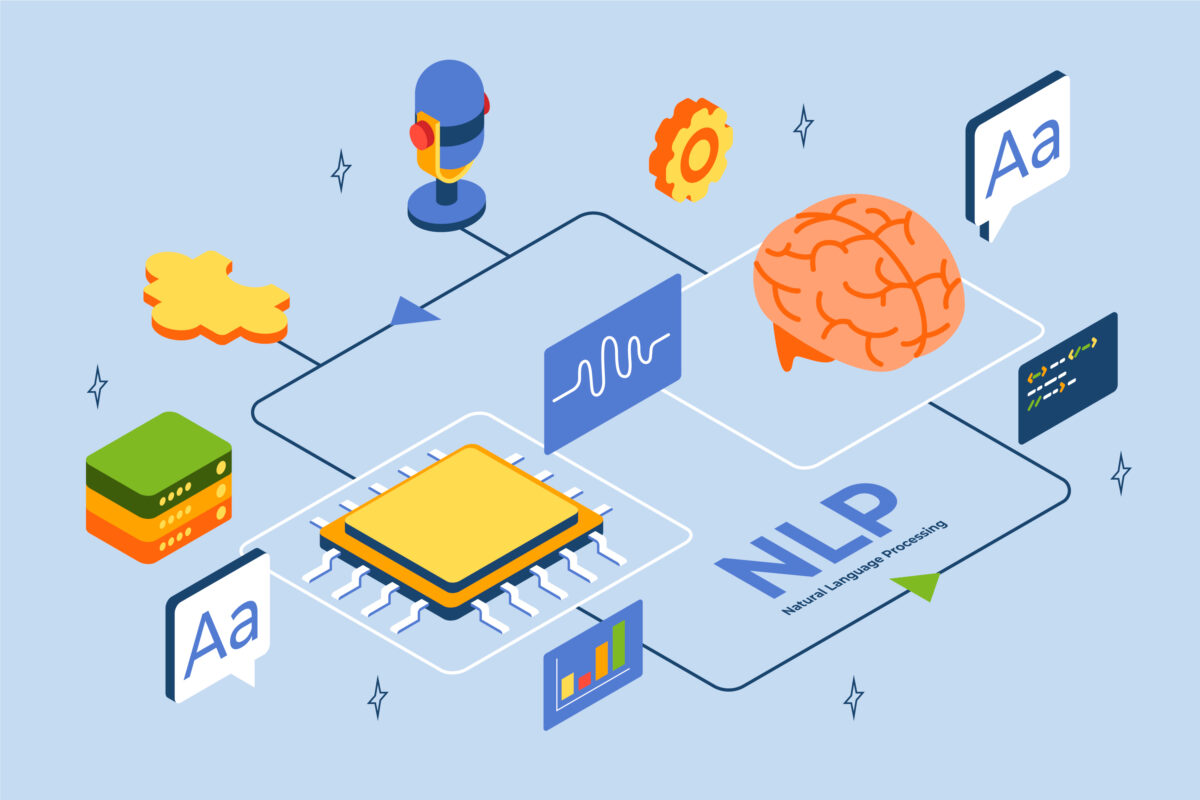NLP is a vital part of our lives, both at home and in the workplace. Alexa, Siri, and Google Assistant, among other voice-enabled applications, employ NLP and ML to provide answers to our questions. Add events to our calendars and use voice commands to contact the contacts we specify. NLP is not only simplifying our lives, but it is also transforming the way we work, live, and play.
The differences between natural language and machine learning
Despite their common usage, Natural Language Processing, Machine Learning, and Artificial Intelligence have distinct definitions. AI is a generic term for machines that can mimic human intelligence, with NLP and ML being subsets of AI.
Natural Language Processing
Machines can read, understand, and interpret human language through Natural Language Processing, which is a form of AI. NLP can help machines understand written or spoken text and carry out tasks like speech recognition, sentiment analysis, and automatic text summarization.
Machine Learning
Machine learning is a form of artificial intelligence that allows systems to automatically learn and improve from experience without any explicit programming. By automating processes and delivering accurate responses, machine learning can assist in solving AI problems and improving NLP.
What does Natural Language Processing involve?
Chatbots
The use of chatbots is to give automated answers to frequently asked customer questions. Pattern recognition systems with heuristic responses are employed for conversing with humans.
Chatbots were employed to provide quick customer support services and reduce the high volume of calls at call centers by answering basic questions.
Translation
The process of translating languages goes beyond simply substituting words word for word. Translating text without altering its meaning or style is challenging because each language has grammar rules. A process that allows computers to deconstruct a sentence, then reconstruct it in another language in a way that makes sense is necessary because they lack grammar understanding.
Speech Recognition
A machine’s speech recognition involves recognizing and interpreting phrases and words from spoken language and converting them to a format that is machine-readable. Google Now, Alexa, and Siri are all examples of speech recognition that are popular.
Question-Answer Systems
Answering customer queries is done by intelligent question-answer systems. Question-answer systems, unlike chatbots, possess a vast amount of knowledge and good language comprehension, rather than canned answers.
Tools such as Siri and IBM’s Watson contain question-answer systems that can be found on social media chats. On Jeopardy, a game show where answers are given first and contestants supply questions, IBM’s Watson computer competed in 2011.
Automatic Text Classification
NLP has a fundamental solution that involves automatic text classification. During the search phase, information can be easily retrieved quickly using this. The content of this NLP application can be used to distinguish between spam and non-spam.
Automatic Grammar Checking
The task of automatic grammar checking, which involves detecting and rectifying grammatical errors and spelling mistakes in text depending on context, is a crucial part of NLP. Automatic Grammar Checking will highlight a word in red to indicate a potential error.
The Pros and Cons of Natural Language Processing
Pros of NLP
Faster customer service response times can be achieved by businesses using NLP. Customers always receive prompt answers to their inquiries, regardless of time or day.
Developers can easily implement different NLP applications by using pre-trained machine learning models, which are widely available.
Cons of NLP
It’s possible to spend a lot of time in training. A high level of performance can be achieved within weeks if a new model is developed without a pre-trained model.
ML is not 100% reliable, which is another negative aspect of NLP. Taking into account the possibility of errors in predictions and results is always necessary.
Conclusion
Machines are taught to understand and interpret conversational inputs from humans in Natural Language Processing. Communication channels between humans and machines can be established through the use of NLP based on Machine Learning. Despite its ongoing evolution, NLP has already proven useful in multiple fields. Businesses and individuals can benefit from NLP’s diverse implementations to save time, improve efficiency, and enhance customer satisfaction.
